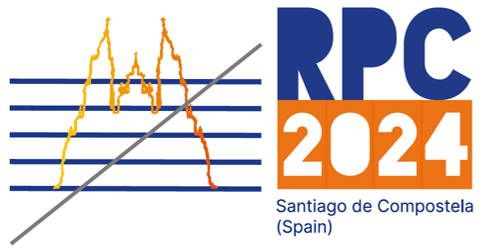Speaker
Description
The MARQ (Multi-Purpose Analyzer for Resonance and Quark dynamics Spectrometer) experiment, a future experiment in Japan, involves the construction of two types of Multigap Resistive Plate Chambers (RPCs): Time-Of-Flight RPCs and tracking RPCs. The former will be utilized for π/K/p separation below 1.7 GeV/c, while the latter will serve for muon identification downstream. However, the development of these detectors has encountered various challenges. Notably, the supplier of carbon tape is no longer available. To solve this problem, we built a carbonless RPC in configuration of 1 stack, 5 gaps, a 0.26mm gap, and a 20cm x 20cm active area. The carbonless electrode consists of an array of 1cm x 1cm copper pads interconnected with several MOhm resistors to simulate the function of the carbon electrode and reduce the chamber's current draw during operation. The side advantage of carbonless is the relatively easier production since the electrode and readout strip are integrated into the same PCB. Additionally, we have encountered constant issues with gas leaks in the glue-sealed Acrylic cases, attributed to transportation damage. To address this, we designed an O-ring gas-sealed chamber with the electrode-readout PCBs as the top and bottom covers, named self-sealed chamber. The material budget is reduced and the production is also simplified with this design. A recent interest of replacing fishline with Mylar spacer is also tested with this chamber. The beam tests were performed at SPring-8 to evaluate the performance. We will present the development and share the test results.

